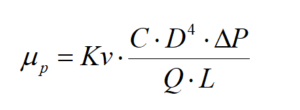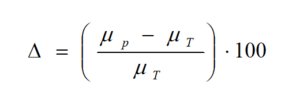Viscosity of a formation fluid is one of the most important parameters for hydrodynamic modeling of oil migration in a reservoir. Therefore, acquisition of correct viscosity data is one of the key objectives of PVT tests. Reservoir oil viscosity widely varies and depends on many factors (fluid composition, temperature, pressure, volume of dissolved gas, etc.).
Capillary, rolling ball or electromagnetic viscometers can be used to determine viscosity of reservoir oil. Each of them has its advantages and shortcomings.
The capillary viscometer has several important strengths. Firstly, in contrast to a rolling ball viscometer, it is directly built in the PVT system and, therefore, enables viscosity measurement when fluid content changes as a result of partial gas liberation. This function is necessary for some tests, e.g. the differential gas liberation test. Secondly, less formation fluid is required for a capillary viscometer, and this is an important factor in case of small samples. For example, in case of electromagnetic and rolling ball viscometers, a part of the fluid cannot be further used and is to be removed from the system. Thirdly, the high-pressure capillary viscometer is a tube with specified length and internal diameter which can be always calculated to determine a required viscosity measurement range.
The measurement of reservoir oil viscosity by a capillary viscometer is based on the Hagen-Poiseuille equation:

Where µр is the calculated viscosity, cP; C is the constant equal to 14.726213×108 to be used with the units listed above; ∆P is the differential pressure between the input and output of the capillary tube, MPa; D is the internal tube diameter, cm; Q is the volumetric flow rate, cm3/min; L is the length of the capillary tube, cm; Kv is the calibration factor of the viscometer experimentally determined for each capillary tube by calibrating it with calibration liquids of known viscosity. The specific value for our viscometer is equal to 1.29.
The relation deviation for calibration liquids was calculated by the formula:

Where µр is the calculated viscosity, cP; µТ is the reference viscosity, cP.